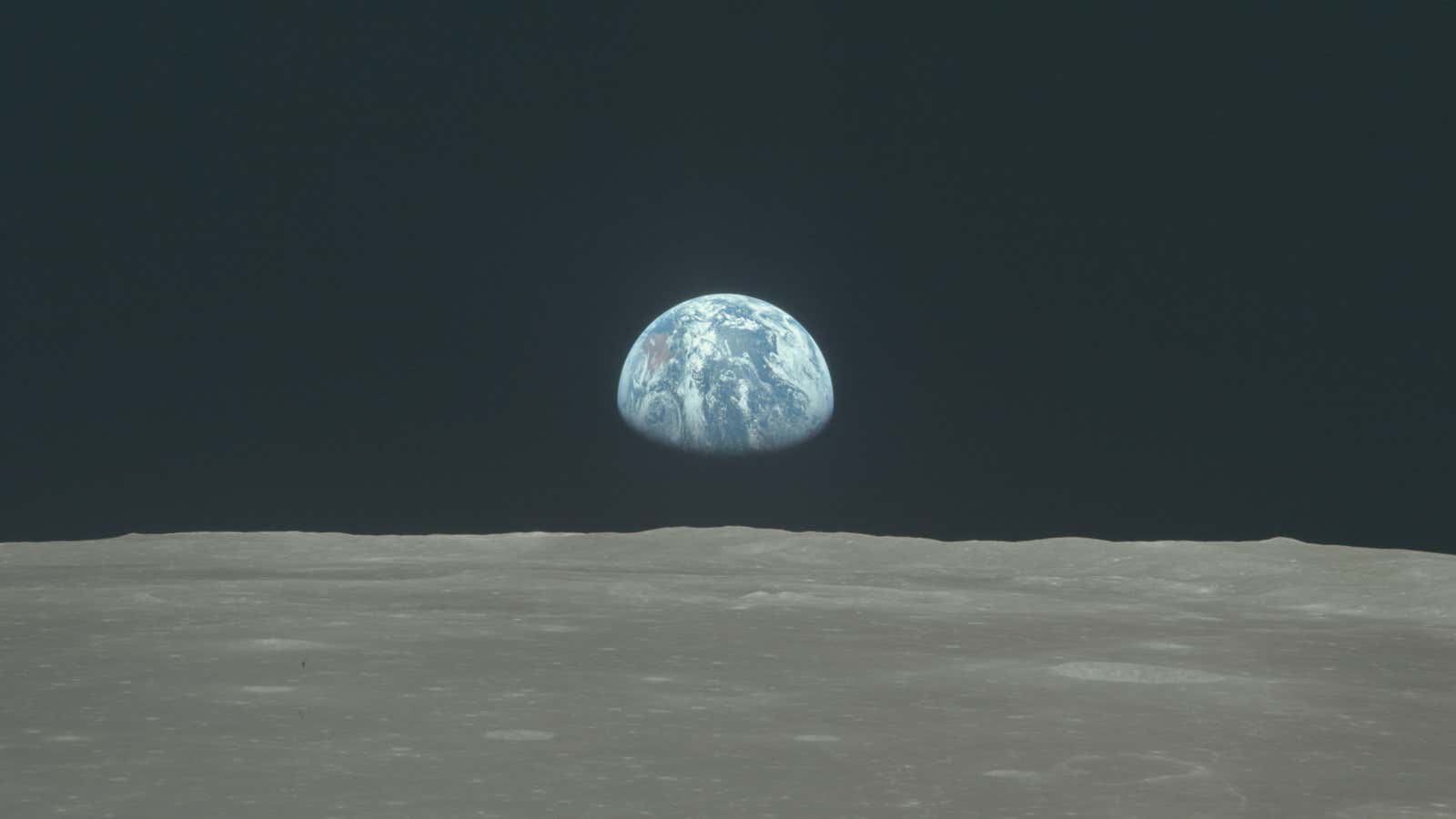Earlier today, at 7am BST/2am ET, a small asteroid flew close enough to Earth to buzz the furthest ring of our planet’s communication satellites.
At an estimated 50-100 ft in diameter, this asteroid—named 2012 TC4—flew within 27,000 miles (43,450 km) of Antarctica. Rolf Densing, who heads the European Space Operations Centre, noted that our farthest satellites are 22,000 miles in space. “It’s damn close,” he said. Blink and you’ll miss it here:
It falls far short of the 6-mile-wide asteroid that is believed to have killed the dinosaurs, but that doesn’t mean it’s harmless.
In 2013, a similarly sized object surprised the world when it blasted through the sky over Chelyabinsk, Russia with what was estimated as a force equal to that of 30 Hiroshimas. The meteor—a space rock that burns up upon entering Earth’s atmosphere—shattered glass in buildings up to 1,000 miles away, injured thousands, and created a shockwave that travelled around the globe, twice.
Scientists have been monitoring 2012 TC4 since it was discovered five years ago by astronomers working out of the Haleakala Observatory in Hawaii. Calculations of its trajectory always put the rock well out of any risk of impact.
But the close proximity of its track—the asteroid flew within 1/8th of the distance from the Earth to the Moon—did allow scientists to test our early warning and detection systems. Vishnu Reddy, an assistant professor at the University of Arizona, and head of the 2012 TC4 campaign, in a CNOES press release described it as an entire system exercise, that “includes the initial and follow-up observations, precise orbit determination, and international communications.”
Scientists are constantly monitoring the skies for objects that may impact with Earth, and particularly ones big enough to lead to the same kind of extinction-level event that killed the dinosaurs. Paul Chodas, manager of NASA’s Center for Near Earth Object Studies, told the BBC that scientists have mapped 95% of space objects half-a-mile (1-km) wide or more.
And this is important because, though unlikely (as in, hasn’t-happened-in-65-million-years unlikely), on a geological timeline that’s nothing. Another impact like the one that killed the dinosaurs is inevitable, and as Chodas told the BBC, we’ll need good five-to-10 years heads-up to have any shot at averting it.
